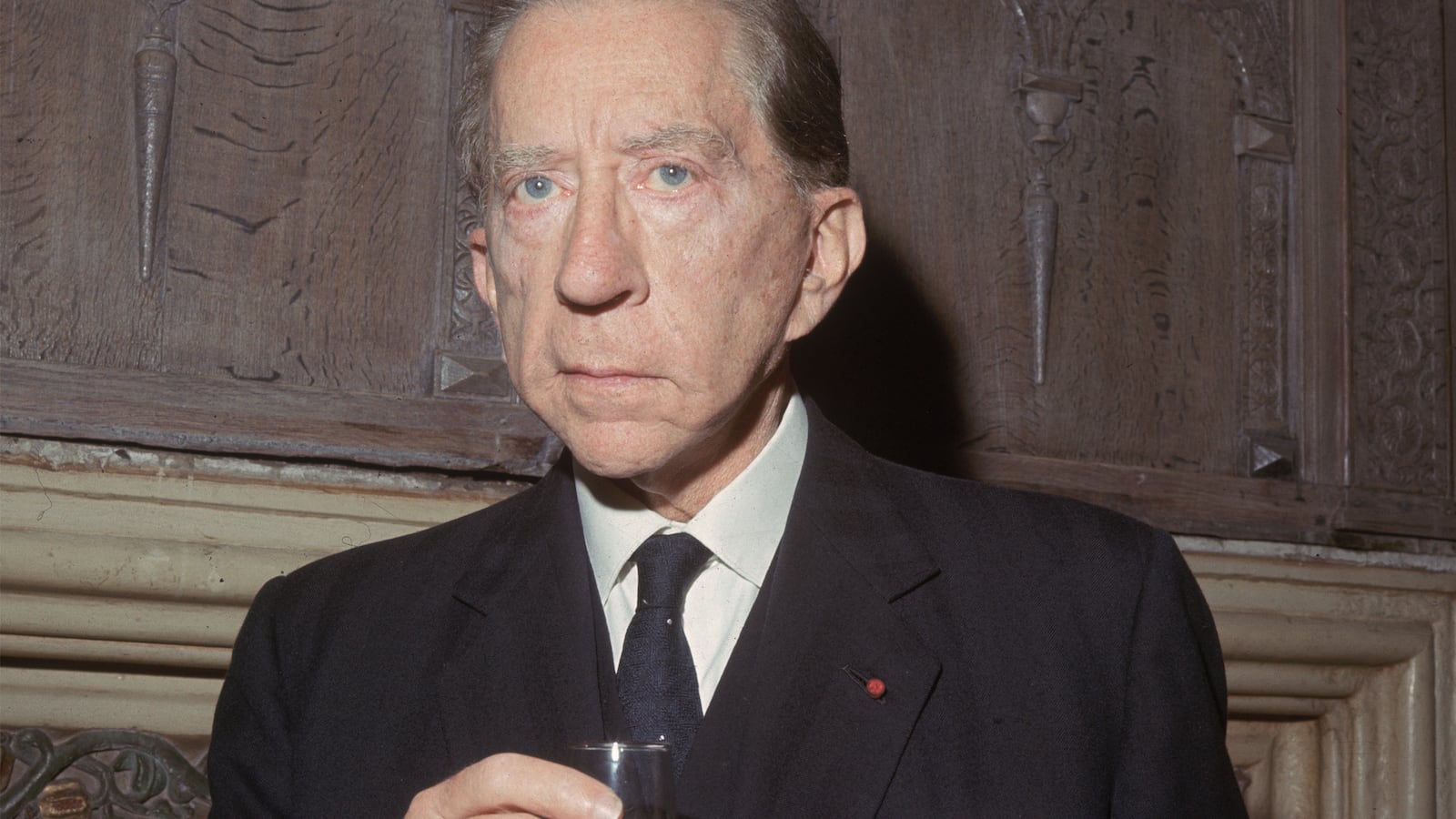J. Paul Getty was named by Forbes in 1957 as the Richest American and a couple of years later he was described as the world’s richest private citizen by the Guinness Book of Records, so he thoroughly deserves to be called the first public billionaire.
Indeed it was a reputation that the Minnesota-born oilman, rather liked to play with, coming up with such choice one-liners as “But, remember, a billion dollars isn’t worth what it used to be,” and “The meek shall inherit the earth but not its mineral rights.”
So when the much-married Getty, an Anglophile, moved to the UK, namely Sutton Place, a 16th century country house in Guildford, Surrey, formerly the house of the Duke of Sutherland, and decided to give a house-warming on June 30th, 1960, it was a stone cold cert that it would be both a piping hot event, and scrutinized by the still fairly toothless gossip media.
There was a hefty guest list, 1200, and those were just the invited guests. A dance floor was installed in the walled garden alongside the swimming pool. Three orchestras were booked and such entertainments as a fortune teller were laid on. There was to be a dinner at eight thirty but the majority of guests were invited for ten.
It was a go. But it did not go too well, so far as the sniffy Brits were concerned.
“I have been to many gracious parties in the house in this house,” wrote Betty Kenward, the fearsome social diarist for Tatler magazine. “This was a complete contrast. First, it was far too crowded.”
She also hated the stands offering milkshakes and soft drinks around the swimming pool, and she paid particular attention to the ladies’ loos. These, she observed, were in creosote huts “which the ladies in their often very pale silks and satins were afraid to use.”
Kenward added pointedly that Getty had instructed that the grand bathrooms indoors be locked during the merrymaking.
This connected directly with Getty’s most media-infamous trait: his stinginess. Some felt this was partly a put-on.
I have referred in this space referred in another context to Michael Pochna, a New York friend, whose father worked for Getty, being taken to meet him as a child.
It was in a small suite in the London Ritz. Getty asked if he would like a glass of milk.
Yes.
Getty opened a window, brought in a milk bottle and rinsed a glass.
“Room service is very expensive here,” he said, gravely.
“He wasn’t cheap,” Pochna observed. “He just liked tweaking people.”
That said, Sutton Place was officially corporate, the HQ of Getty Oil. The house-warming was largely a tax write-off. Then there was the famous pay telephone. Thus had been installed in the hall when Getty had observed that visitors to Sutton Place were using the phone.
As Getty himself, a connoisseur of his reputation as—his phrase— “a penny-pincher”, would write in his autobiography:
A coin-box telephone was installed at Sutton Place. It was affixed to the wall of a smallish, but easily accessible, room on the ground floor of the house. A large (and, I’m afraid, garish and unsightly) enameled metal sign bearing the legend PUBLIC TELEPHONE was even mounted on the outside of the door to the room.
It was there for eighteen months, he added. Then he had it permanently removed.
It was, however, there for his house warming. Nicky Haslam, not yet an interior decorator, was a guest at the Sutton Place shindig He would later write: “An enormous marquee provided lavish food and drink, but what most people were fixated on was the fact that Getty was so ‘stingy’ that he didn’t provide cigarettes, and spent much of the evening circling his coin-operated phone box, conspicuous in the hall.
“My best friend decided to get his own back by spiriting away one of the table decorations as he left, but unhappily he chose a valuable 17th-century ewer (a vase or jug-shaped pitcher).”
At ten the bulk of guests began to arrive. And they included a veritable army of gatecrashers. So the party swelled, and wore on.
Some reports of the aftermath twang the heartstrings. There were stories of gates being wrenched off their hinges by the departing guests, of lawns chewed into mud and covered with glassware.
The statue of a nymph was described as carrying a champagne empty on one hand and a firework in another. Horrors!
As for the interior, it was said that cigarettes had burned into antique furniture, tapestries were smeared with ice-cream. And so on.
This was not confirmed by anything that emerged from Getty though, who wrote that he was pleased things had gone so well and that commentary had been so complimentary.
This suggests that some of the reports were expressing a degree of resentment, and Schadenfreude about the misfortunes of an unnecessarily rich American.
But as to the loss of the “table decoration,” well, that had been discovered, of course. And that was a wholly different situation.
I remember vividly the story zipping around the circle of the perp’s friends and acquaintances of the perp in London, myself included. These days it would have gone viral on the Internet in nano-seconds. It did make the papers but the perp was not identified by name and the “table decoration” was reported as having been a piece by Benvenuto Cellini.
Well, it was, in fact, by the only slightly less famous early 18th century London silversmith, Paul de Lamerie.
Haslam, who described the perp as having “a very discerning eye”, wrote that “when the fuss about it actually made the newspapers, he sheepishly returned it to Mr. Getty, alerting him to the fact he was leaving it in a phone box outside Harvey Nichols.” That’s the Knightsbridge department store and there was surely more to it than just parking venerable silver in a telephone kiosk. But, however, it happened.
J. Paul Getty never gave another grand party. He next made the media klieg light in 1973 when his grandson was kidnapped in Rome. He declined to pay the ransom until an ear was delivered to the newspaper, Il Messagero, in Rome, and the rest promised in installments. Getty gave his son the moolah, charging him 4 percent for the loan.





